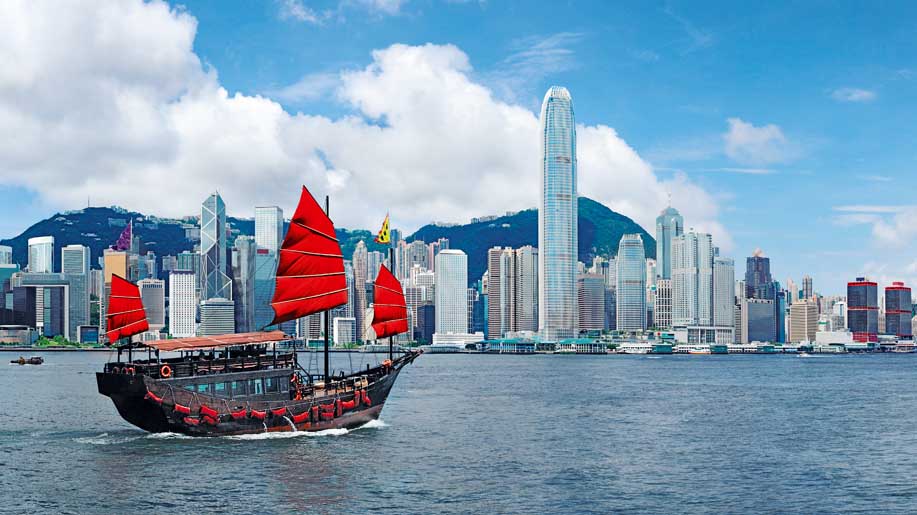
Hong Kong literally translates to Fragrant Harbour in Chinese. Perhaps it comes from the sweet taste of the harbour’s fresh water or the incense tree forest in the northern suburbs neighbouring Mainland China.
DNA
Indians found a home in British-occupied Hong Kong as far back as in the mid-19th century when they were brought here as part of the British troops. Today, the number of Indians has increased from a few hundreds to thousands; this includes Hong Kong-born people of Indian origin — most of whom have been living in the People’s Republic of China since at least four generations.
The number of this ethnicity is still at a paltry 28,616 Indians, making up six per cent of Hong Kong’s non-Chinese population (4,51,000), as per a report published by Hong Kong’s Home Affairs Department. Others who largely dominate this immigrant population include Indonesians, Filipinos and whites in the top three, followed by Pakistanis, Nepalese, Japanese and Thais, after Indians.
Expatriates find the transition to Hong Kong fairly easy with its planned infrastructure, well connected train systems, and reasonably priced public transport and taxis. This autonomous territory that is separated from Mainland China by Shenzhen River has a conspicuous divide between its western and traditional characteristics: expanses of greenery, glass towers, stout vintage buildings, quiet temple lanes and bustling scenes illuminated by neon lights.
STRUCTURE
It is Tsuen Wan in the New Territories where Hong Kong’s traditional street food and local restaurants can be indulged in. However, movie directors prefer Kowloon’s Yau Ma Tei area to capture Hong Kong’s mystique with its many Chinese temples, and businesses vending healing herbs and local wares. Sham Shui Po and Mong Kok, also in Kowloon are others where locals are often found at their usual haunts.
All 1,104 square kilometres of Hong Kong are made up of Hong Kong Island to the south, Kowloon on the other side of the harbour, New Territories between Hong Kong and Mainland China, and over 200 offshore islands.
Central District on Hong Kong Island is the business hub of the territory where multinational financial corporations, consulates of international countries, government headquarters, and The Landmark, the oldest luxury shopping mall here, are based. It is best known amongst tourists for its well-defined skyscrapers and architectural ingenuity.
The finest views of Hong Kong Island’s glass towers though, is from the glitzy bars in the Tsim Sha Tsui neighbourhood of Kowloon Peninsula. It is on the other side of the harbour that shoppers truly find paradise in malls such as K-11 for art and fashion, iSquare for mid- to high-end retail stores including jewellery and watch boutiques, and Hong Kong’s largest shopping mall, Harbour City for luxury fashion and lifestyle brands.
Being a prime real estate commodity, it isn’t uncommon in Hong Kong to have one tower shared by recreational institutes, hospitality brands, and small and large workplaces. Most buildings here extend to house multiple facilities. For example, Grand Hyatt Hong Kong, on Hong Kong Island, in Wan Chai, interconnects with Hong Kong Convention and Exhibition Centre.
INCOME
Hong Kong ranks amongst the top ten cities in PricewaterhouseCoopers’ 2016 benchmarking reports of leading “financial centres globally” and for “ease of doing business”. It also has the first rank in the Cost of Living list compiled by Mercer, a global human resources consulting firm. It is one of the world’s busiest ports for shipment of containers and busiest airports for cargo, in addition to its internationally lauded service industry that makes about 90 per cent of its GDP.
The Hong Kong government recognises “accommodation and food” as the larger chunks of the territory’s service industry. This could translate into a booming tourism and hospitality industry with the myriad of hotels and internationally acclaimed restaurants and bars. To state precisely, there are 61 Michelin Star and 63 Bib Gourmand restaurants in the city.
In 2015, Hong Kong Tourism Department reported receiving 59.3 million people from around the world, with an average hotel occupancy of 86 per cent per night. Mainland China continues to be Hong Kong’s largest source market making up nearly 80 per cent of the total arrivals computed at 5,93,07,596 in 2015.
PERSONA
Being around five hours away, Indians too find Hong Kong attractive for a long weekend. The entertainment hub is enough to appease varied interests from spiritual experiences such a yoga and feng shui, to martial arts (Bruce Lee, Jackie Chan and Wing Chun hail from here) tours, and retail therapy. About 40 per cent of the territory is designated as Country Park. Hiking or a picnic in the green is possible in Sai Kung island, Lantau, and Lamma in the New Territories and the surrounding islands. Ending the trek in Lantau Island at the 34-metre tall Tian Tan Buddha (plm.org.hk) ranks high on the tourist’s list. Dragon’s Back in southeast Hong Kong’s Shek O Country Park remains the most popular trail; it is a ridge that lies between Wan Cham Shan and Shek O Peak. Alternatively, a walk down Lan Kwai Fong on Hong Kong Island post sunset can make some wild memories with fine food and innovative cocktails.
Read more about this SAR in the pages that outline what to do, see and visit in Hong Kong.












